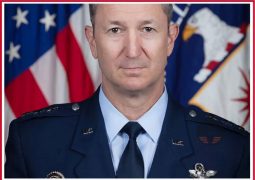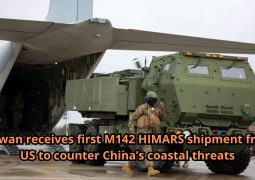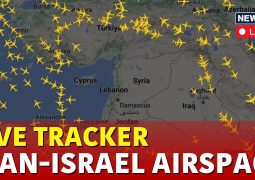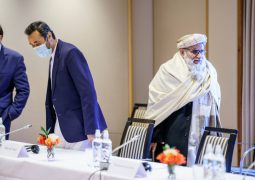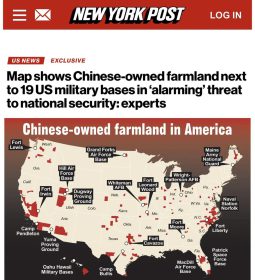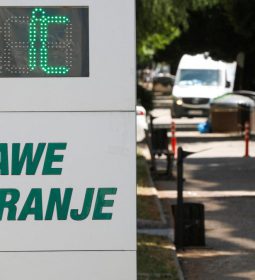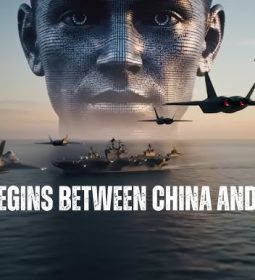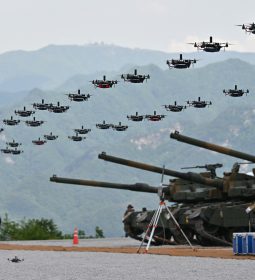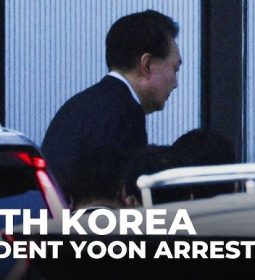5 US aircraft carriers in western Pacific will show of strength to China
North Eastern Asia
48 views 0

- Unprecedented increase in naval power to the region is intended as a signal to Washington’s allies and rivals, especially Beijing, analysts said
- Washington wants to reassure its partners that it remains committed to Indo-Pacific, despite conflicts in Ukraine and the Middle East

- The US is likely to deploy nearly half of its aircraft carriersin the western Pacific this year, in a signal of deterrence against the increasing military activity in the region by China and North Korea, analysts said.
- Three US aircraft carriers are already operating in the western Pacific Ocean, with two more on the way. Their arrival will mark the first time that five of the 11-strong carrier contingent have operated in the region.
- The USS Abraham Lincoln– part of the US Navy’s Pacific Fleet – was spotted heading out of its home port in San Diego, California and was sailing towards the western Pacific as of February 5, according to the US Naval Institute’s Fleet and Marine Tracker.
- Do you have questions about the biggest topics and trends from around the world? Get the answers with SCMP Knowledge, our new platform of curated content with explainers, FAQs, analyses and infographics brought to you by our award-winning team.
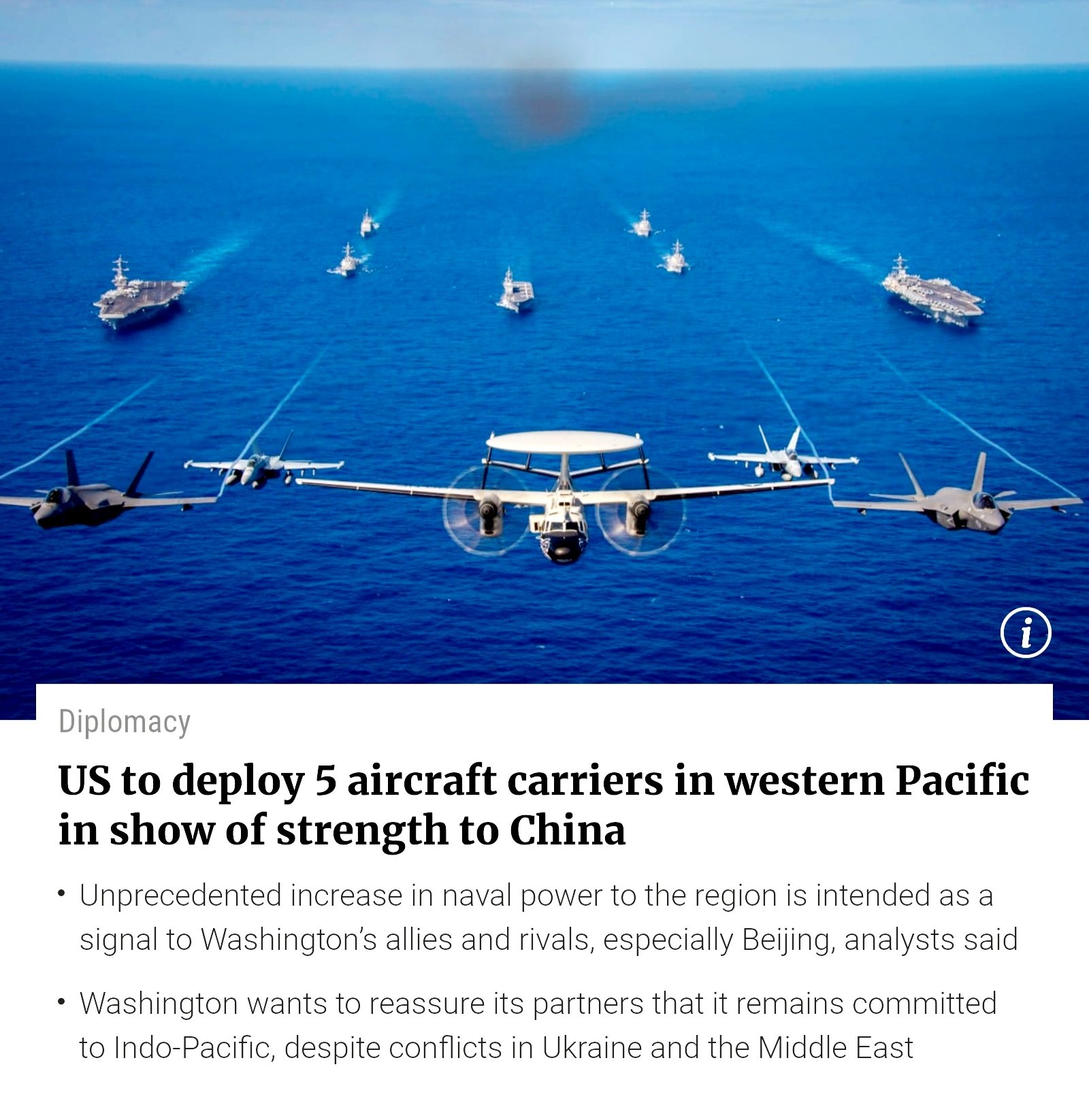
- The USS George Washingtonis also expected to be deployed in the region to replace the USS Ronald Reagan, which will be relocating from Yokosuka, Japan for maintenance at the Puget Sound naval shipyard in Washington.
- The USS George Washington was the first nuclear-powered aircraft carrier to be deployed to Japan, where it served from 2008-15 before it was relieved by the Ronald Reagan for the midlife refuel of its two reactors, as well as repairs, upgrades and modernisation.
· Chinese scientists war-game hypersonic strike on US carrier group
- In addition to the USS Ronald Reagan, the USS Carl Vinson and USS Theodore Roosevelt were stationed in Guam and Hawaii, respectively on Monday and are expected to stay in the western Pacific until April and July.

- Last month, the Theodore Roosevelt and Carl Vinson strike groups took part in a Multi-Large Deck Event with Japan in the Philippine Sea that included enhanced maritime communication operations, air warfare operations, and cross-deck flight operations.
- According to the US Navy 7th Fleet, the exercise was intended “to strengthen maritime integrated-at-sea operations and combat readiness”.
- “We are more capable when we work together to address shared maritime security challenges,” said Rear Admiral Christopher Alexander, commander of USS Theodore Roosevelt’s Carrier Strike Group Nine.
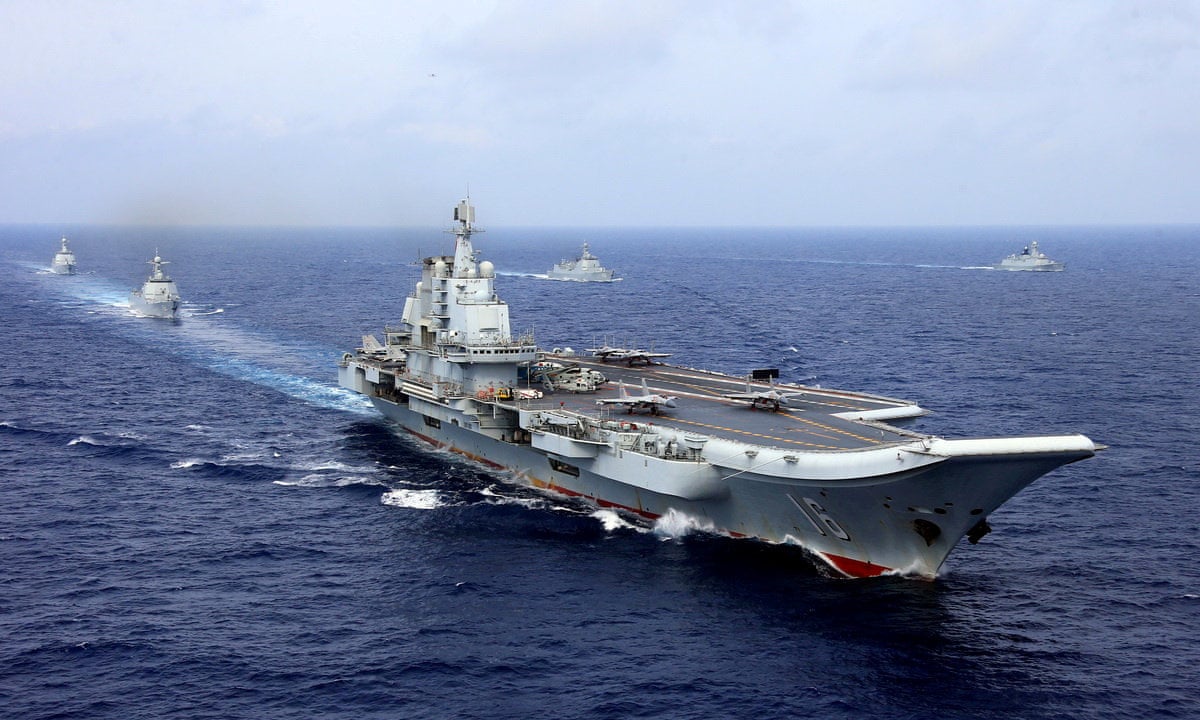
- “Being able to consistently conduct complex operations such as this demonstrates the inherent flexibility of the US Navy to operate whenever and wherever we choose, giving our nation and allies flexible options for deterrence and defence,” he said.
- Also in January, the USS Carl Vinson conducted naval drills with South Korea and Japan in the East China Sea, following North Korea’s firing of an intermediate-range ballistic missile.
- The trilateral exercises consisted of joint sailing, advanced maritime communication operations, maritime interdiction operations training, air combat drills, staff exchanges, and integration.
- “Aircraft carriers are one of the most visible assets in our military. Deploying multiple carriers to a region sends a very clear signal to adversaries,” said Brian Hart, a fellow with the China Power Project at Washington-based think tank the Centre for Strategic and International Studies.
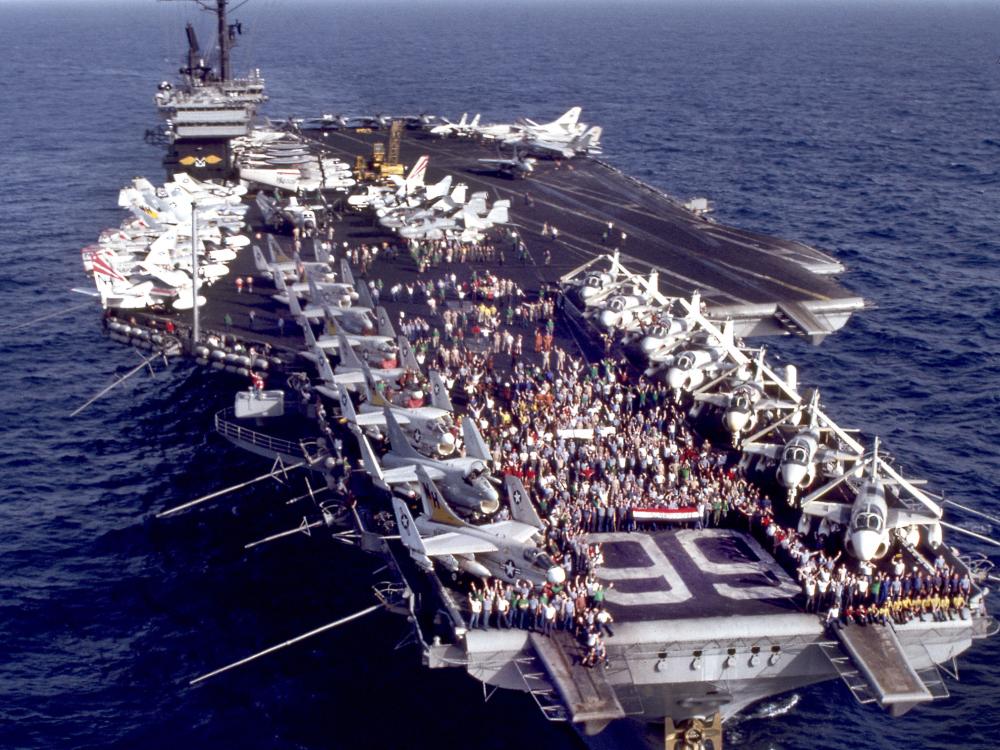
- “Given the war in Ukraine, the conflict in the Middle East, and the Houthi attacks in the Red Sea, the US military wants to signal that it can handle those situations while remaining focused on the priority theatre, which is the Indo-Pacific.”
· With two wars raging, can the US afford to take on China?
- Benjamin Barton, associate professor at the University of Nottingham’s Malaysia campus, said the deployment was intended to signal Washington’s focus on the Indo-Pacific, despite the conflicts in Europe and the Middle East.
- “It would seem that there a few reasons at stake: the first is clearly to send a strong signal to allied – of reassurance – and rival – of deterrence – powers alike in the Indo-Pacific,” Barton said.
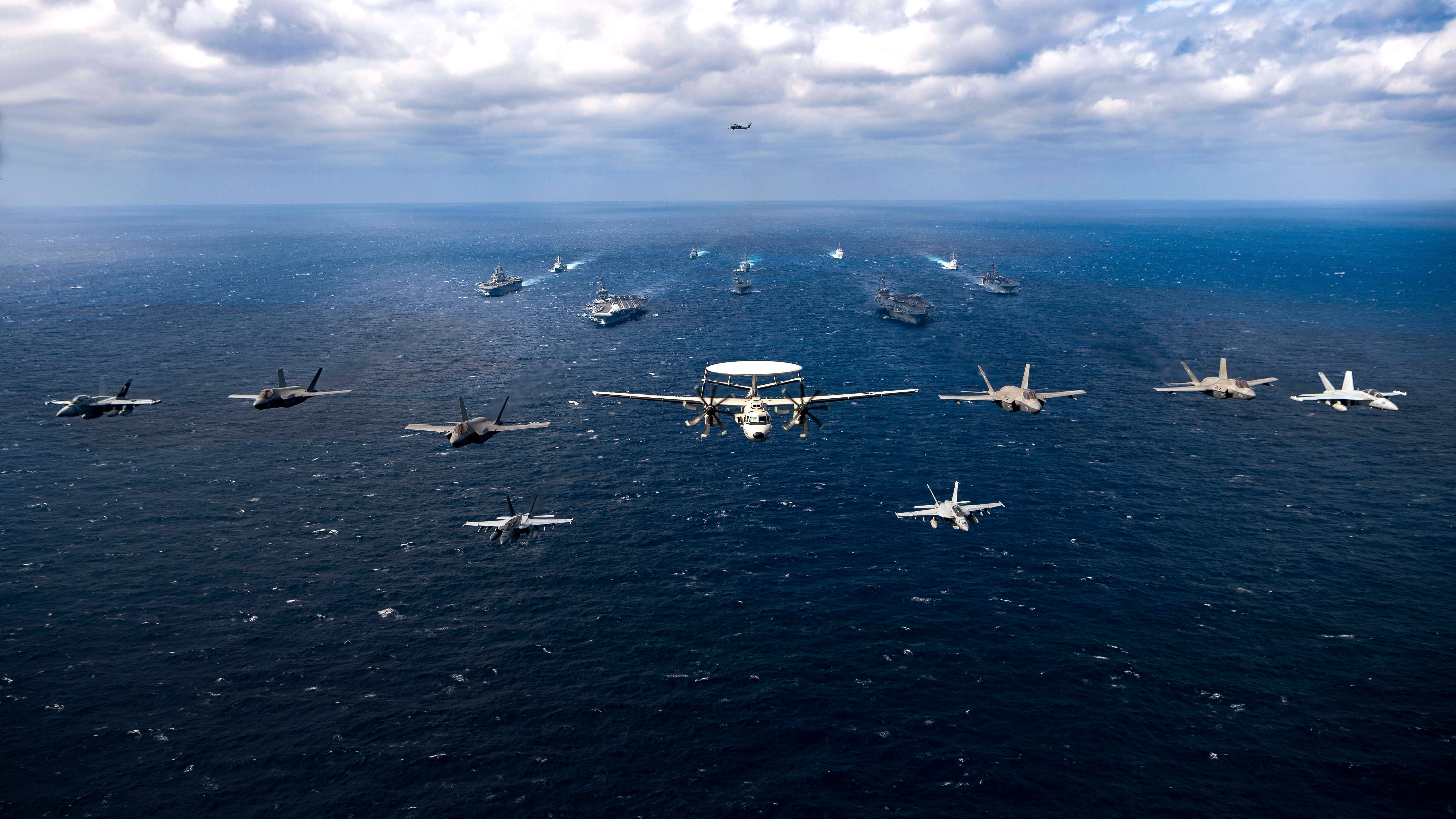
- “[It is also] to state that although US foreign policy is currently consumed by two strategic conflicts taking place outside Asia – Russian aggression in Ukraine, the situation in Gaza – the Indo-Pacific is still very much at the forefront of its strategic concerns.”
- Barton added that “containing China within the region remains a top priority, even if there’s been a warming of ties bilaterally”.
- Collin Koh, a senior fellow at Singapore’s S. Rajaratnam School of International Studies, echoed Barton’s view and noted that there had been no abatement in tensions over Taiwan, as well as in the South China Sea and the Korean peninsula.
- “The surge in carrier deployments, as well as an intense series of theatre military engagements with close allies such as Japan, appear to have been designed to both reassure regional allies and partners, as well as deter adversaries such as China and North Korea,” he said.
- While there has been no significant PLA activity in the Taiwan Strait since the island’s election last month of the independence-leaning Democratic Progressive Party’s William Lai Ching-te as president, that could change in coming months.
- There have been projections that Beijing could ramp up military activities near Taiwan’s presidential inauguration day in May.
· PLA amphibious attack on Taiwan unlikely before 2030: ex-US Navy official
- Beijing regards Taiwan as part of its territory, to be brought under mainland control if necessary. Most countries, including the US, do not recognise the island as an independent state.
- However, Washington is opposed to any attempt to take Taiwan by force and is committed to supplying arms to Taipei.
- “The carriers are participating in drills to demonstrate US combat readiness. They are probably converging in the area in response to the Taiwan election,” said Timothy Heath, a senior international defence researcher at US-based think tank the Rand Corporation.
- “China is unlikely to risk any coercive action during the Lunar New Year, but the PLA could become more threatening against Taiwan after the Lunar New Year and around the time of the Taiwan president’s inauguration,” he said.
- In the South China Sea, there have been continuing tensions between Beijing and Manila over the disputed Scarborough Shoal, with a clash between the two countries’ coastguards on Monday.
- North Korea’s provocations of the US and its allies have also been on the rise. On Wednesday, South Korea’s Joint Chiefs of Staff reported that North Korea fired several cruise missiles towards the Sea of Japan, also known as the East Sea.
- According to Barton, the US is clearly monitoring the situation in the Taiwan Strait closely, where he predicted that the PLA’s military activities would continue throughout Lai’s time in office.
- He added that the South China Sea’s strategic importance and the growing activism and defensiveness of North Korea also posed concerns in the region.
- Washington’s show of strength is “designed to deter multiple fronts at once” and sends a message regarding “its ability to preserve peace and the status quo in the region through the deterring presence of its sheer military might alone”, Barton said.
- “I think Washington wants to impress this point upon Beijing and to others watching that it can multitask multiple strategic hotspots at once. The message is that its ability to work on several fronts should be seen as a strength and not a weakness to be exploited.”
- This article originally appeared on the South China Morning Post (www.scmp.com), the leading news media reporting on China and Asia.
- Copyright (c) 2024. South China Morning Post Publishers Ltd. All rights reserved
Source :
- Previous Indonesia elections-2024: Prabowo Subianto is frunrunner: Jokowi’s son is his vice-president
- Next Meeting on Afghanistan Held in Bishkek without ruling Taliban



